Some people are saying Hurricane Patricia could be a Category 7 storm - here's what that means
The Saffir-Simpson Scale categorizes a hurricane based on its wind speed. Tropical storms and depressions generally cause less damage and fall below the scale, which technically only goes up to Category 5.

Less intense hurricanes are generally more common than "major" hurricanes, those that are Category 3 and above. In the map below you can see how many of these storms hit the continental US from 1950-2011, color-coded by category.

Tropical storms have wind speeds of 39-73 mph. Once a storm crosses this threshold, it gets a name.
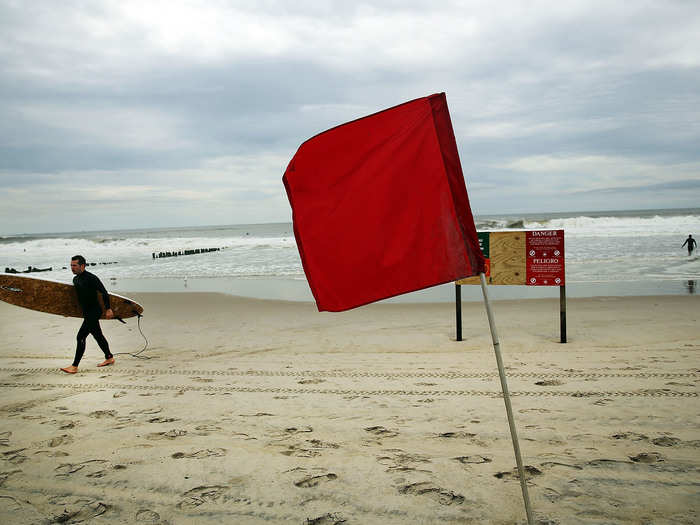
Hurricane Dolly was Category 1 when it hit Texas in 2008. This rating has wind speeds of 74-95 mph. They can damage the outside of homes, break large tree branches, and possibly knock down power lines, causing outages for several days.

Category 2 hurricanes have wind speeds of 96-110 mph. Storms of this intensity can cause major damage to homes, uproot large trees, and power outages that last up to weeks are generally expected.

While a hurricane's category classifies how strong it is, this definition can't fully predict how devastating it might be. Superstorm Sandy hit Category 3, but by the time it made landfall in New York and New Jersey in 2012 it had weakened to a post-tropical cyclone.
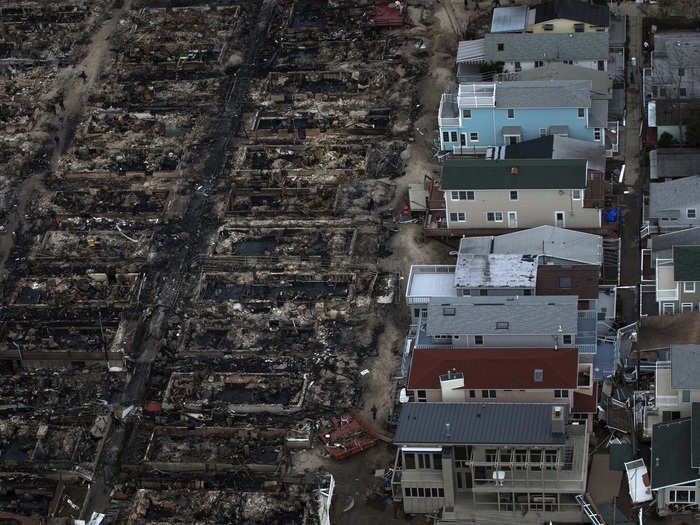
Category 3 storms have wind speeds of 111-130 mph. But with Sandy, the storm surge did some of the worst damage. It reached nearly 8 feet in parts of the Jersey Shore and 6.5 feet around New York City. Its "superstorm" status was because it was so wide — up to 1,000 miles across.

Hurricane Katrina in 2005 was the most devastating storm ever to hit the United States. It killed 1,833 people and caused $108 billion in damage, though it was technically a Category 3 when it made landfall in Louisiana with sustained wind speeds of 125 mph.
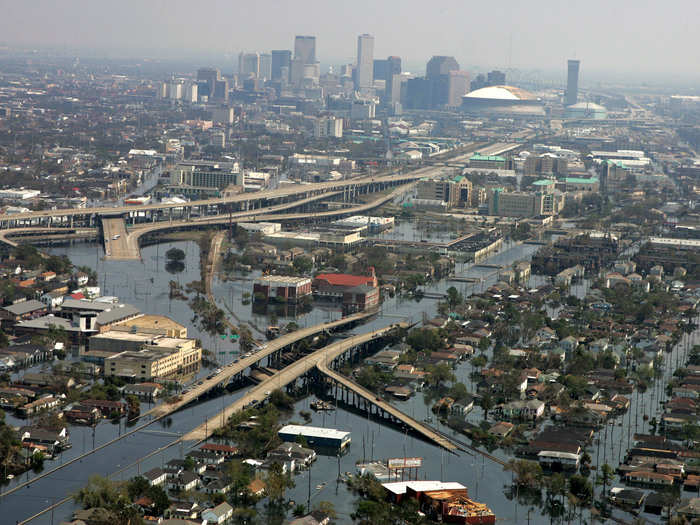
Hurricane Charley was a Category 4 storm when it made landfall in Florida in 2004. These storms have wind speeds of 131-155 mph, uprooting most trees, with power outages that can last weeks or even months.

Hurricane Andrew was one of the strongest storms ever to make landfall in the US. It was a Category 5 hurricane when it hit Dade County, Florida in August 1992. Category 5 storms have wind speeds greater than 156 mph, which can completely destroy most framed homes.

Category 5 hurricanes unquestionably cause power outages that can last weeks to months. Most of the area will be uninhabitable for that amount of time, too.

Hurricane Patricia currently has a sustained maximum wind speed of 190 mph, and is barreling toward Mexico's Pacific Coast. Theoretically, if we extended the Saffir-Simpson Scale to Category 6, wind speeds would be between 175-195 mph and at Category 7 would be anything above 195.

Compared to all these storms, though, a Category 7 hurricane could cause catastrophic damage in southwest Mexico. Since the Saffir-Simpson Scale is also a measurement of destruction, and Category 5 storms typically cause total destruction of buildings and utilities, technically categories above 5 wouldn't cause more damage because there is no more damage to be done.

Ixtapa, a small city in Western Mexico, before the storm hits.
But higher wind speeds can cause even more storm surge, so that argument isn't totally true, Needham argues at WXShift. That's because pre-landfall wind speeds are what push walls of water up on to the coastal shores. The more wind, he argues, the bigger the storm surge. He's estimated the storm surge from Hurricane Patricia could be over 16 feet.
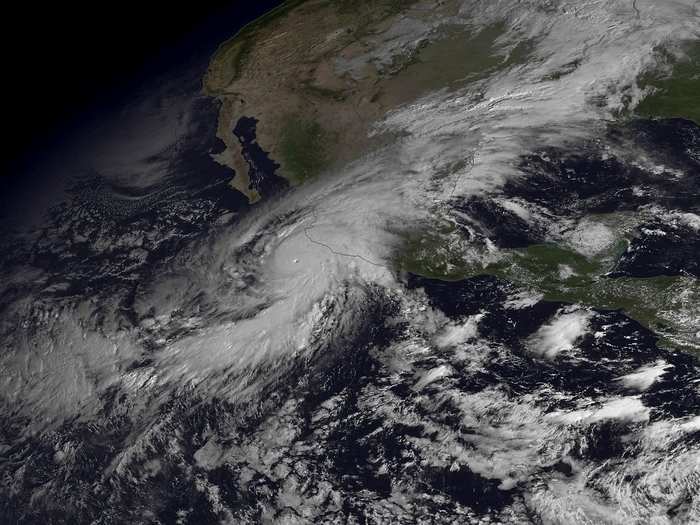
Source: WX Shift.
Patricia hit its max speed on Friday afternoon at more than 200 miles per hour. Later in the day, it calmed to about 190 mph. The National Weather Service predicts that Patricia will hit the Mexican state of Jalisco Friday evening as a Category 5 and continue to weaken after landfall. Cities Puerto Vallarta and Guadalajara are in the path of the storm.
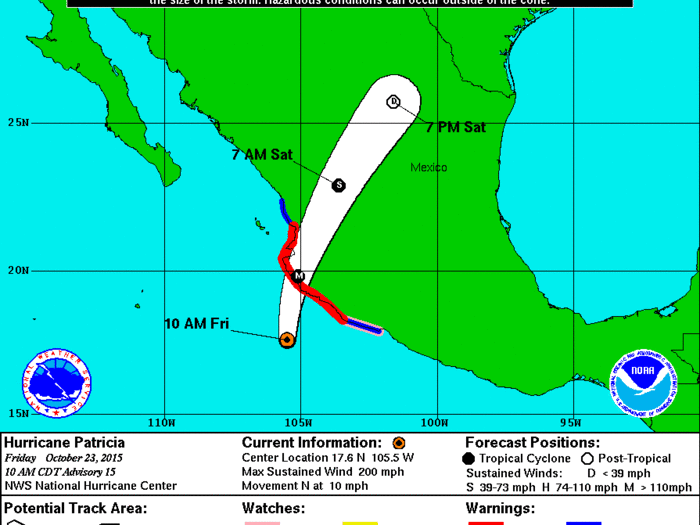
Even if Patricia does slow down, it'll still be immensely powerful and huge when it hits Mexico. Rainfall should reach 8 to 12 inches, with 20 inches in some areas, according to the National Weather Service.
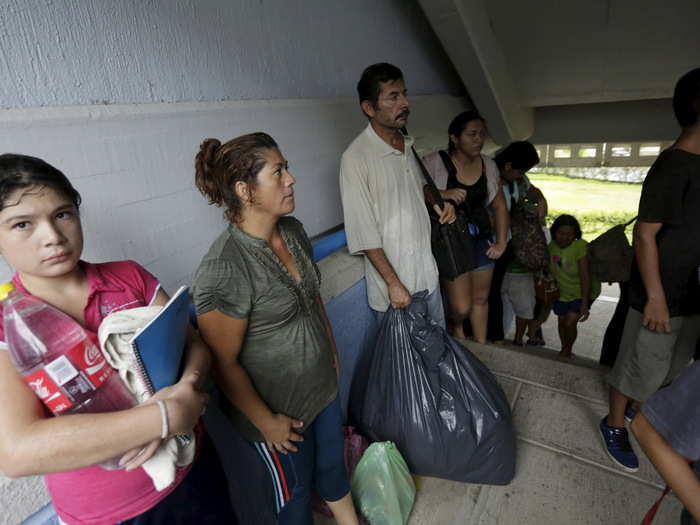
Patricia is expected to remain an extremely dangerous category 5 hurricane through landfall," the most recent National Weather Service update read. "Preparations to protect life and property should be rushed to completion.
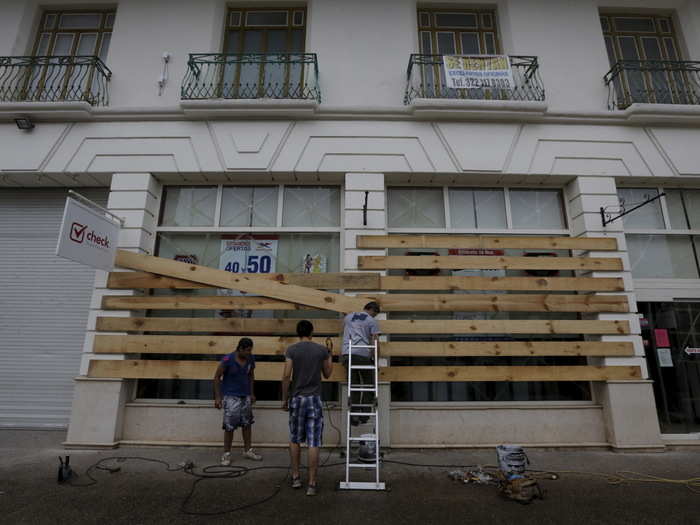
Source: NWS
The damage from Patricia will likely be catastrophic, much like other Category 5 storms have been. Most framed homes are usually destroyed, with complete roof and wall collapse because of the wind speeds. It can takes months to recover. And that's not even counting the catastrophic flooding.

Popular Right Now
Popular Keywords
Advertisement